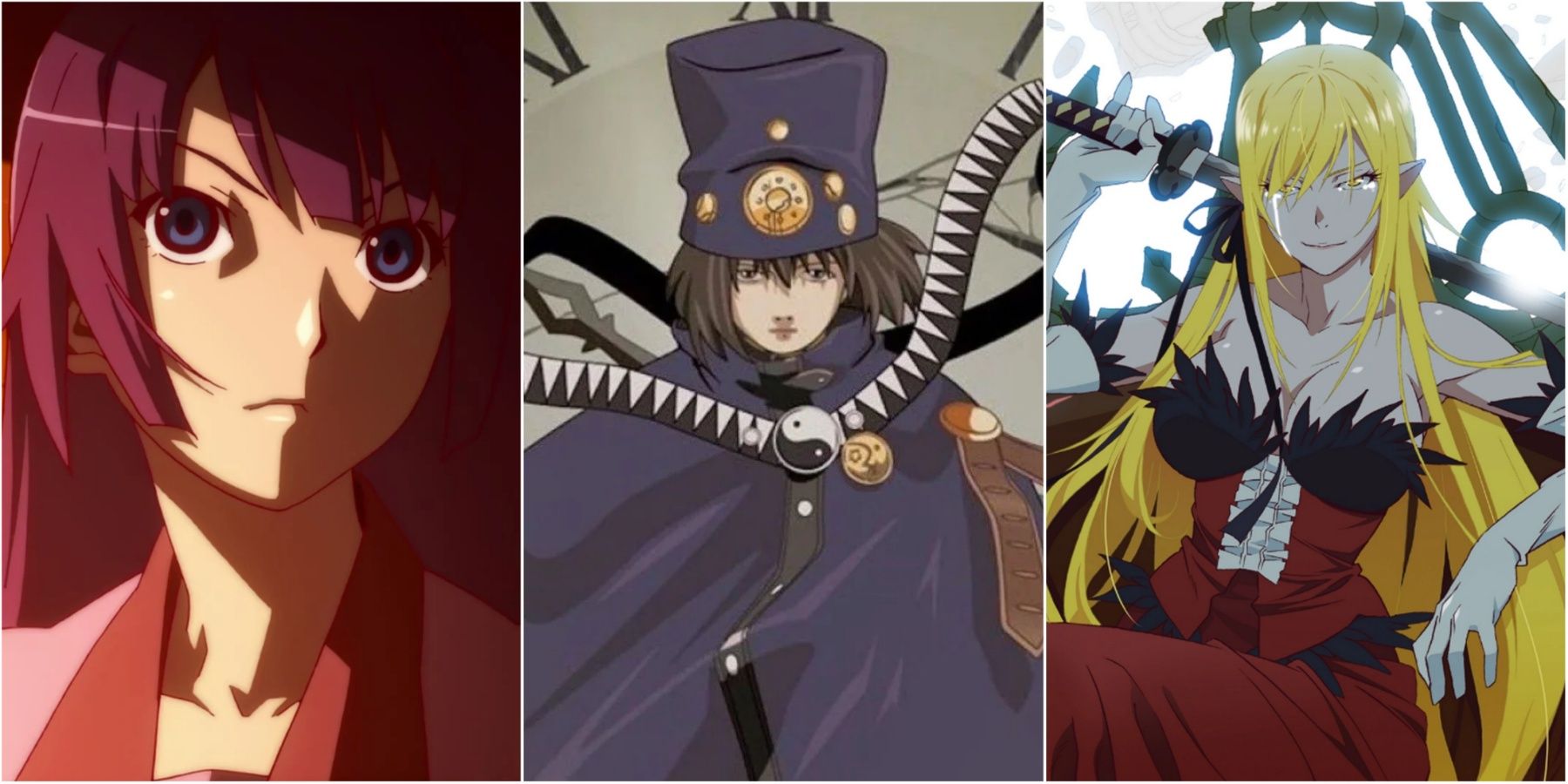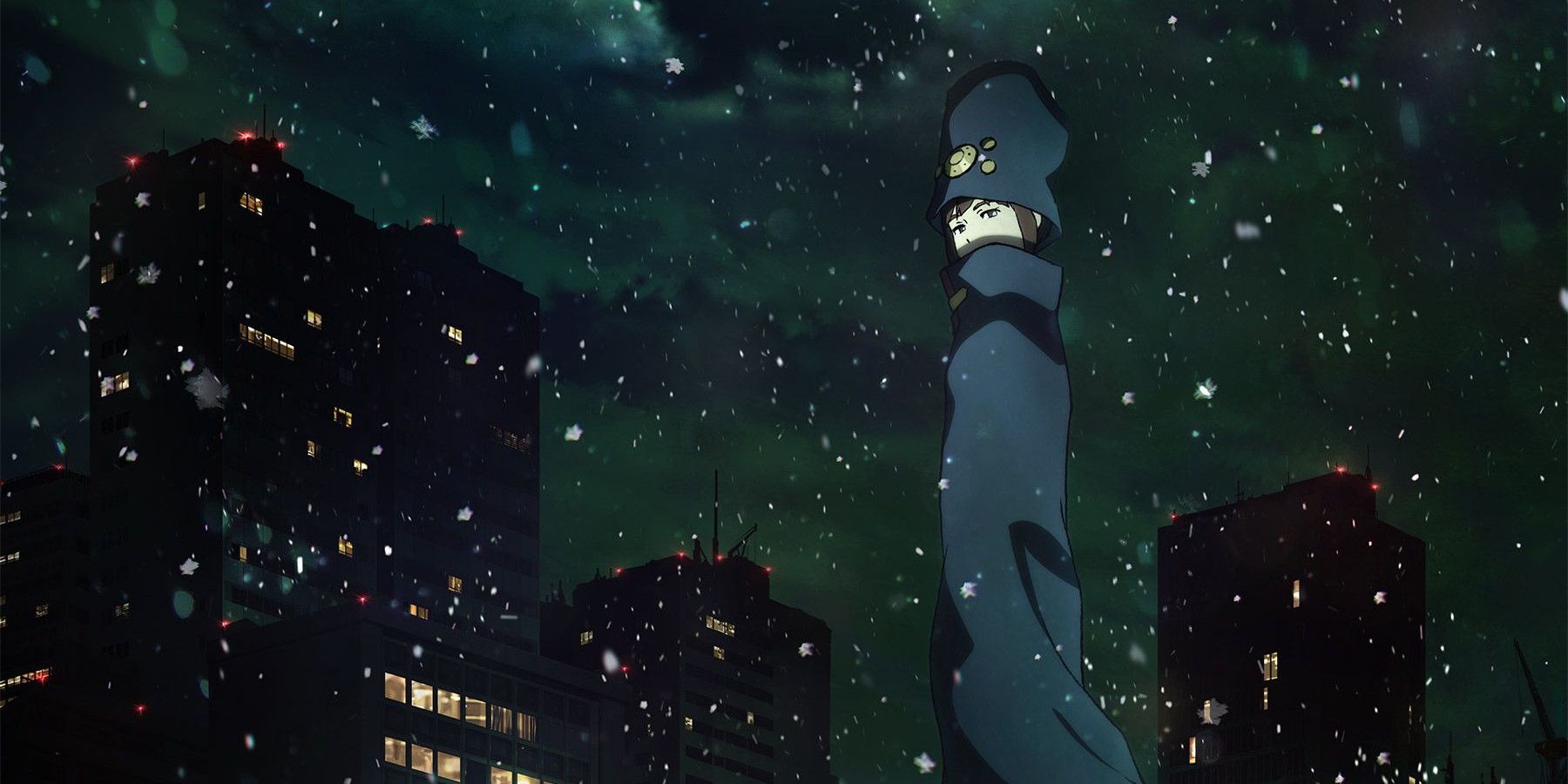Light novels have been a titanic source behind the lion's share of seasonal anime over the past decade, resulting in entirely new popularized genres and some certified classics. It's hard to imagine that light novels would be as popular as they are in Japan without the influence of one man, however: Kouhei Kadono, the author of Boogiepop.
Having started in 1998, Boogiepop is a young adult series of novels and short stories, with multimedia adaptations and spinoffs expanding on the source material. It is a supernatural puzzler with horror elements pertaining to the psychological, paranormal, and otherworldly, praised for its unconventional and captivating narrative. The series is about an entity known as Boogiepop that appears on earth, inhabiting the body of one Touko Miyashita, and fighting powerful entities that endanger the world. These range from otherworldly threats preying on humans, to superhumans with powers and the aim to misuse them.
The Inspiration
The DNA of Boogiepop can be found in numerous popular light novels that have gained popularity within the last two decades, if not for its exact atmosphere, then for its plotting. Kadono wrote Boogiepop in such a way that information was often conveyed in pieces, asking the audience to put them together. The chapters were told from multiple characters' perspectives, often with the timelines overlapping. Nisio Isin's Monogatari series takes a lot of cues from Kadono in how its narrators switch and the ways the story is told. It's the same series that makes a joke out of skipping chapters in its own story and then points it out, a joke that lovingly carried over to the anime.
Kinoko Nasu of Fate/Stay Night and Garden of Sinners fame, although having started out around the same time as Kadono, shares a similar style of writing his modern fantasy world. No matter how grand the magical society is, the atmosphere of the world is thick with mystery, revealing that the curtain between normalcy and the supernatural is one bloody alley away. Boogiepop is all about urban and modern fantasy, and how spooky it can be. The titular Boogiepop themselves is initially frightening, even though they are a powerful entity that appears to side with humanity against threats to the world. These threats begin as rumors and whispers in classrooms before the central characters realize far too well that the monsters in the dark are real.
There have been two animated adaptations of Boogiepop since the series began publication in the late 90s. They differ greatly in their direction, especially visually, and were far different in their scope. Funnily enough, both were animated by Madhouse and both can be argued to carry a thick atmosphere and soul that honors the original series.
Boogiepop Phantom (2000)
Boogiepop Phantom is an interesting case among the two series, as it isn't actually a direct adaptation of the light novels. Rather boldly, it is an original series with many of the same characters that merely takes place between different stories from the novels. In this way, writer Sadayuki Murai, the writer of Cowboy Bebop and Perfect Blue, was able to write an original series of stories that with freedom while maintaining the unsettling soul of the original.
Many of the key characters make appearances throughout, but even if they are "main characters" like Touka Miyashita or Nagi Kirima, they are but small pieces in the larger puzzle. It could be argued there is no character more or less important than any other. Entire episodes will be focused on the perspective of one individual, from a germaphobic female student afraid for her life to an unstable drug addict living in delusion.
The latter of those two was the focus of disturbing episode 4, "My Fair Lady." In that episode, the audience follows a man, the victim of an unnatural drug being peddled, who becomes delusional, and grooms a younger coworker into being his ideal plaything. In this way, a key tension in Boogiepop is how the meddling of these supernatural entities highlights the darkness within humanity. Many fantasies slowly pull back the curtain and reveal the truth of things, but this series never quite feels as though it's showing its hand, nor does it have to.
Phantom's greatest strength is its visual style, and even in its somewhat rough look, it has a distinct character. The visual style feels like a return to a particular style of low-budget Japanese horror filmmaking that compensates for limitations with its concepts and direction. Japanese horror is hard to put to animation, let alone fully explain to western audiences, but it is heavily atmospheric. Boogiepop Phantom is so enticing because it exists within a dimension so saturated in the modernity of modern society that its daily motions become as unnerving to an adult as the darkness is to a child.
Boogiepop and Others (2019)
In 2018, a promotional video was released for Boogiepop and Others that served a few purposes. Firstly, to commemorate the series for its 20th anniversary. Second, to announce the production of a new anime, also produced by Madhouse. Third, and most importantly, this PV served as an advertisement for the rerelease of the novels, including several omnibuses in the U.S. The third point is most crucial because, despite being a gorgeously directed trailer, it was not fully representative of the anime adaptation that was to come in January 2019. Much of the footage was created solely for the trailer and included scenes depicting stories that were not featured in the 18-episode series.
Boogiepop and Others, from One Punch Man director Shingo Natsume, was an adaptation of four stories from the franchise. It was also a decidedly modern take that, despite abandoning the aesthetic of 90s Japan, maintained an eerie and enticing atmosphere recontextualized in a more current setting. The music by Kensuke Ushio carried a lot of the weight of the show's tone, whereas the visuals, as pretty or cool as they could be, suffered from some uneven and inconsistent quality now and then. It's a shame that despite Phantom capturing the illustrated work of Kouji Ogata, the newer adaptation's designs don't feel nearly as captivating.
The visual direction could have been fine-tuned, and the series could have been slightly longer to flesh out the individual novels. Ultimately, Boogiepop's unconventional storytelling can leave some viewers lost. There are many characters, but rarely one so ever-present as to feel like a protagonist. This can make it hard to get invested, but as many critics have pointed out, this is the kind of show that you have to sit and reflect on. The longer that Boogiepop lingers, the more intriguing it becomes, much like the urban legends, ghost stories, and internet creepypastas that tickle that morbidly curious part of the psyche. It is definitely an oddity, but it's the kind of oddity best enjoyed with fellow admirers of the strange and spooky, with a drink in hand or some light (and legal) drug use.
The Boogiepop Series is available in print in the west through Seven Seas Entertainment. The anime, Boogiepop Phantom and Boogiepop and Others are available for streaming through Crunchyroll.


